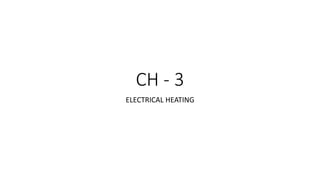The document provides an overview of electrical heating methods, including resistance heating, arc heating, and induction heating, detailing their principles and mechanisms. It also discusses heating element design, temperature control, and the causes of heating element failure. Additionally, specific devices like electric immersion heaters and electric water heaters are described, along with various types of furnaces used in industrial applications.

























































